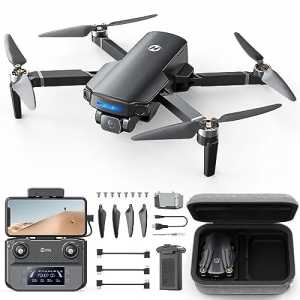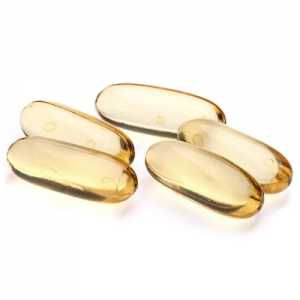
Dry Needling For Sports Injuries: Enhancing Recovery And Performance

For athletes and active individuals, injuries can be a frustrating setback. Effective recovery strategies, whether muscle strain, tendonitis, or chronic pain, are essential for returning to peak performance. One increasingly popular method among sports professionals is dry needling. This technique offers a unique approach to managing sports injuries, enhancing recovery, and optimizing performance. This blog will explore how dry needling works, its benefits for sports injuries, and what athletes can expect during treatment.
What Is Dry Needling?
Dry needling is a therapeutic technique that involves inserting thin, sterile needles into specific trigger points within muscles. Trigger points are tight knots of muscle tissue that can cause pain and discomfort, often called "myofascial pain." Unlike acupuncture, which is based on traditional Chinese medicine principles, dry needling focuses on Western anatomy and physiology, targeting muscle function and pain relief.
How Dry Needling Works
When inserted into trigger points, needles stimulate the muscle tissue, promoting a local twitch response. This twitching helps to release muscle tightness and improve blood flow to the area, facilitating healing. The process may also activate the body’s natural pain-relieving mechanisms, reducing pain and improving mobility.
Benefits of Dry Needling for Sports Injuries
1. Pain Relief
One of dry needling's primary benefits is its ability to alleviate pain. Many athletes report significant pain reduction after just a few sessions. By targeting trigger points, dry needling interrupts the cycle of pain and muscle tightness, providing immediate relief.
2. Enhanced Recovery
Dry needling promotes faster recovery from injuries. By improving blood flow and reducing inflammation, the technique helps deliver oxygen and nutrients to the affected muscles, facilitating the healing process. Athletes often find they can return to their training regimens sooner than with conventional treatments alone.
3. Improved Range of Motion
Muscle tightness can restrict movement, affecting an athlete's performance. Dry needling helps to relax tight muscles, improving flexibility and range of motion. This enhanced mobility can be crucial for athletes recovering their pre-injury performance levels.
4. Targeted Treatment
Dry needling allows practitioners to focus on problem areas, providing a customized treatment plan tailored to the athlete's unique needs. This targeted approach can be particularly beneficial for athletes with specific muscle groups prone to injury or tightness.
5. Decreased Muscle Tension
By addressing trigger points and relieving muscle tension, dry needling helps restore normal muscle function. This can improve performance, as athletes can move more freely and efficiently during training and competition.
6. Non-Invasive Approach
Dry needling is a non-invasive technique that can complement other rehabilitation strategies. It is often used with physical therapy, massage, and other modalities, making it a versatile addition to an athlete's recovery plan.
What to Expect During a Dry Needling Session
If you're considering dry needling for sports injuries, it's essential to know what to expect during a session:
- Initial Assessment: Your practitioner will evaluate your condition, discussing your medical history, injury specifics, and previous treatments. They will identify trigger points that may be contributing to your pain.
- Needle Insertion: The practitioner will insert thin needles into the identified trigger points. You may feel a slight prick or pressure, but the process is generally well-tolerated.
- Local Twitch Response: As the needle stimulates the muscle, you may experience a local twitch response. This reaction indicates that the muscle is being activated and is normal during treatment.
- Post-Treatment Effects: After the session, you may feel mild soreness in the treated area, similar to post-exercise soreness. This discomfort usually subsides within a day or two.
- Follow-Up Sessions: Multiple sessions may be recommended to achieve optimal results depending on the severity of your injury and your treatment goals.
Who Can Benefit from Dry Needling?
Dry needling can be beneficial for a wide range of sports injuries, including:
- Muscle Strains: Dry needling can help relieve pain and tension associated with strained muscles, promoting faster recovery.
- Tendonitis: Conditions like Achilles tendonitis or patellar tendonitis can benefit from dry needling, as it targets the surrounding muscle tissue.
- Chronic Pain: Dry needling may provide relief for athletes experiencing chronic pain, such as lower back or neck pain.
- Post-Workout Recovery: Even healthy athletes can use dry needling as part of their recovery regimen to prevent injuries and enhance performance.
Conclusion
Dry needling is a valuable tool for athletes managing sports injuries. By targeting trigger points and promoting muscle relaxation, dry needling in Pune can significantly enhance recovery and boost performance. If you’re an athlete aiming to overcome an injury or optimize your training, consider discussing this treatment with your healthcare provider at The Physio9 Clinic. With expert guidance, dry needling can help you get back in the game faster and stronger.
Author Bio
Article Comments
No Comments!
At present there are zero comments on this article.
Why not be the first to make a comment?
Similar Articles
Search Pages
User Upgrade
account to full use of editor,
Including hyperlinks
Article Categories
There are zero sub-categories in this parent category.
There are zero sub-categories in this parent category.

















